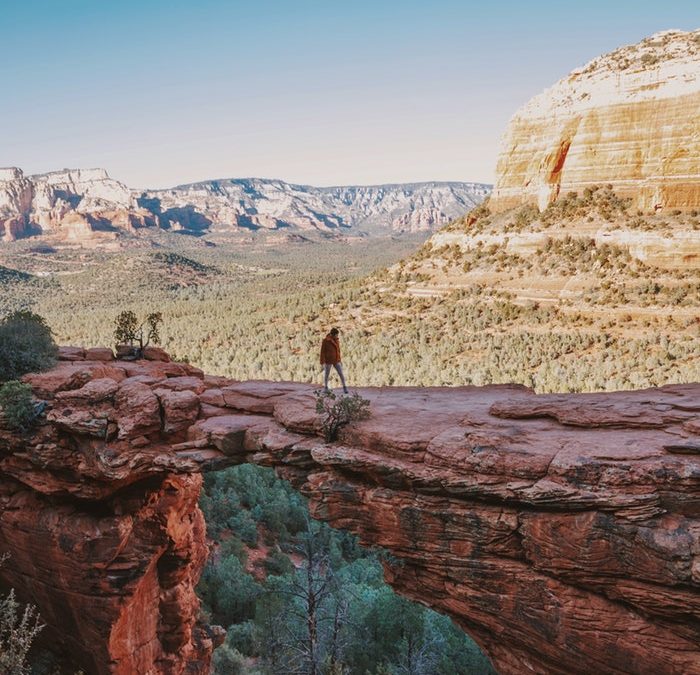I’m terrified. In just three months, I’ll be setting out to thru-hike the Arizona National Scenic Trail, or AZT for short. It’s only 800 miles compared to the 1,150-mile Ice Age Trail in Wisconsin, which I’ve thru-hiked twice now. So what’s the big deal? It’s not the distance. It’s the terrain.
I’ve lived my entire life in the Upper Midwest. I know all about hiking through deciduous and pine forests, and tromping across prairieland and farmland. And while I’ve hiked plenty of days when the temperatures sizzled in the 90s and the humidity soared, water was never an issue. Wisconsin, my home state, is dimpled with some 15,000 lakes. Our eastern border is with Lake Michigan, our western with the mighty Mississippi River. Lake Superior, the greatest of the Great Lakes, touches part of our northern tier. We’re completely waterlogged, which is a great thing for a long-distance hiker.
The AZT, in contrast, runs through a lot of desert. I don’t know much about deserts. But I do know this: deserts = little to no water. During my research and preparation for this trip, I’m learning that people hiking northbound, as I’ll be doing come March, hike into the Sonoran Desert almost immediately. They have to cache water, as there are often no reliable water sources on the trail. But sometimes other hikers or bikers or ne’er-do-wells pilfer their caches. In some situations, that can be life-threatening.
Some hikers bury their water caches, but I haven’t figured out how to hide a shovel in my carry-on bag when I fly out. One guy said he seals ice cubes in a plastic bag with a meal-sealer, then hides it off the trail. While he hikes, the ice melts. Then, when he retrieves his hidden cache, he has water to refill his bottles and an easy-to-carry, lightweight bag left. Interesting, but I don’t have a meal-sealer, nor do I want to buy one and have to carry it for six weeks. I’m inclined to see if I can beg trail angels to cache water in a not-that-obvious spot, and also shortly before I arrive, to help ensure I’m not out of luck. Heck, maybe they’ll sit at a trailhead and wait to hand it to me. You never know.
The guidebook also talks about plenty of places, especially in the southern desert stretches, where your only water source is a cattle tank. It describes the water as scummy and green, and even seasoned backpackers say it’s hard to make themselves drink it, even after pre-filtering and then treating it with chlorine tablets. I’m a newbie at filtering water. I’m fine doing it from pretty clear, clean streams. But I don’t know about pre-filtering or chlorine tablets. So much to learn. And such little time.
Then there’s the elevation. The elevation here in Wisconsin tops out at 1,951.5 feet. The elevation on the AZT ranges from about 1,700 feet on up to 9,148 feet. How much will that impact my pace? My water consumption? I have no idea. At least I do know this: I don’t tend to have major problems with altitude. I discovered that when my husband, Ed, and I hiked up Pike’s Peak, a 14’er in Colorado. He started struggling when we hit 10,000 feet, whereas I was OK.
Last, the wildlife. There are rattlesnakes here, and scorpions and Gila monsters. I don’t like the sound of any of those! Give me a good, old black bear any day instead.
So yeah, I’m terrified. But in a good way. Because while thoughts of dehydration, snakes, scorpions and giant, biting lizards are scary, I know I’ll be fine. I’ve got experience. I’m preparing carefully. And I know that no matter how much my nerves are jangling, once I touch the southern terminus marker and take that first step, all of my fears will melt away. Because I’ll be in the great outdoors, away from all the stresses of everyday life. And I’ll be hiking.


